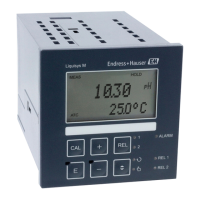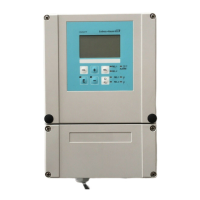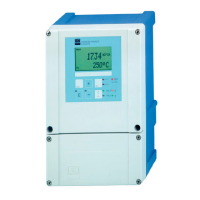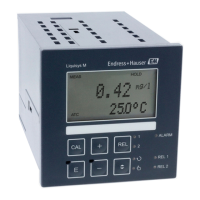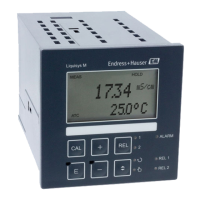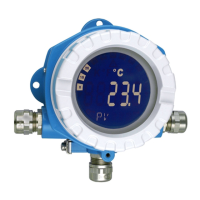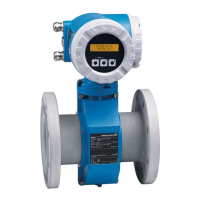Liquisys M CPM223/253 Electrical connection
Endress+Hauser 23
C07-CPM2x3xx-04-06-00-xx-011.eps
Fig. 18: Asymmetrical (without PML) and symmetrical (with PML) connection of ORP electrodes
A Panel-mounted instrument
B Field instrument
C Potential matching (PM) in the medium for symmetrical connection
The pH and ORP sensors can be connected both symmetrically and asymmetrically.
Generally, the following applies:
• No potential matching connection present: asymmetrical connection
• Potential matching connection present: symmetrical connection
The decision can also depend on the operating conditions.
Pay attention to the following:
• Liquisys M is pre-programmed for symmetrical measurement with potential matching. If
you want asymmetrical measurement, you have to change the configuration in the A2
field.
• If the "asymmetrical" software setting was selected for a symmetrical connection, the
operating time of the reference electrode is reduced.
In the case of a symmetrical connection, the potential matching pin must be connected
and always immersed in the medium.
Advantages of symmetrical vs. asymmetrical:
• Symmetrical measurement:
– No leak current since the reference and the pH/ORP electrode is connected with high
resistance
– Safe measurement under difficult process conditions (strong flowing and high-
resistance media, partially soiled diaphragm)
• Asymmetrical measurement:
– Use of assemblies without potential matching possible
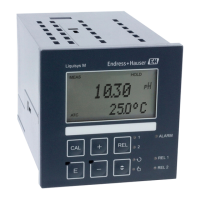
